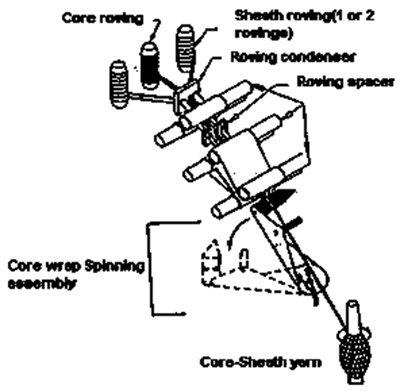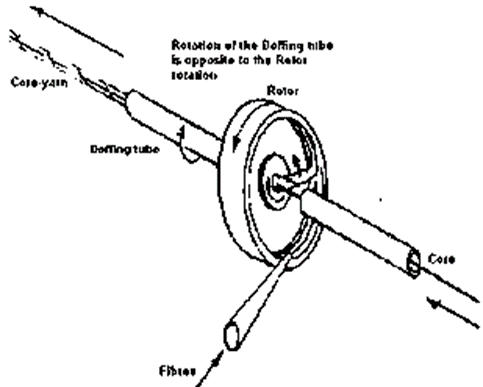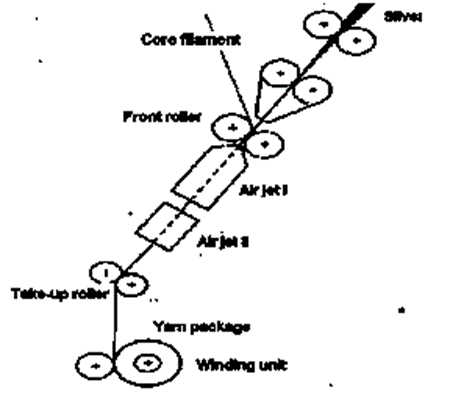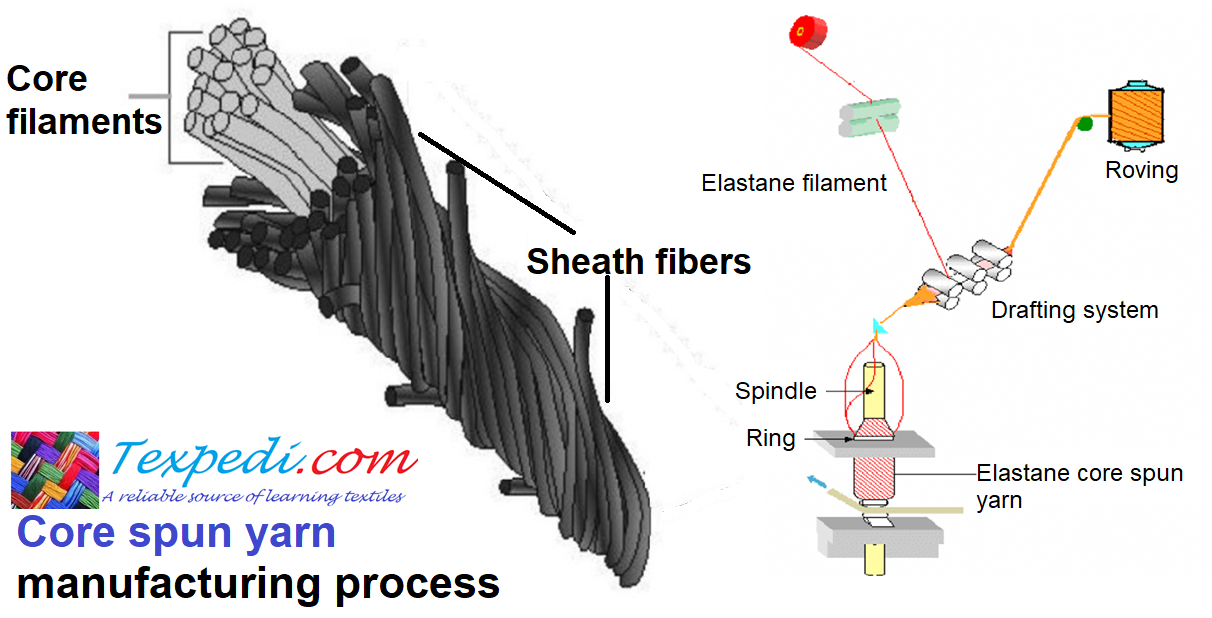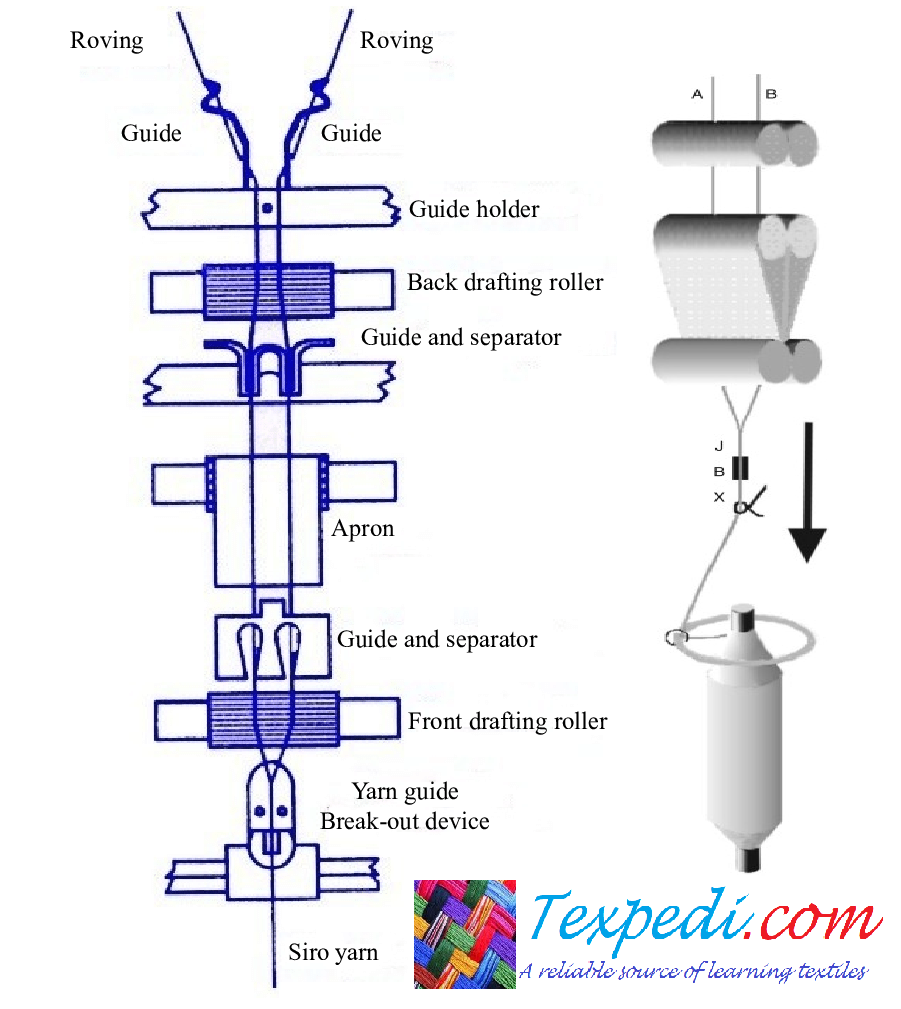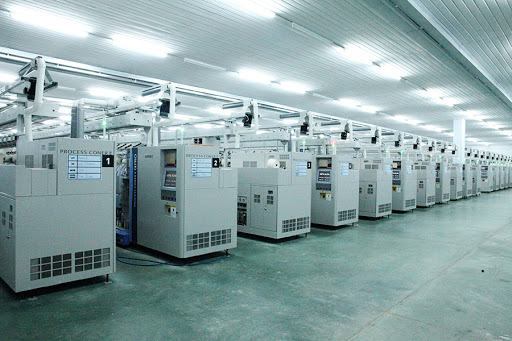Core spun yarn or compound yarn is one of the remarkable special yarns. One of the techniques to manufacture core spun yarn is the spinning process, where you might get better results. Although the core spinning of the center is complex, the usual ring spinning process tends to be effortless and low-cost. However, spun yarn manufacturers may witness a major problem at the time of subsequent process where the filaments which are core, get tangled.
There are several combinations of core spun yarns and compound yarns, including filament core/staple-fiber wrap, staple-fiber core/filament wrap, and staple-fiber core/staple-fiber wrap. The majority of conventional spinning methods, including as ring spinning, air-jet spinning, and friction spinning equipped with accessories can be used to produce these sorts of yarns.
The filament core/staple-fiber wrap yarns are the most extensively utilized of the varieties of core-spun yarns listed above. The center of this yarn consists of continuous filaments entirely encircled by staple fibers. It is often known as core/sheath yarn because the untwisted staple fibers around the filament core function as a sheath or a casing for the core. This yarn may be used to create items ranging from conventional garments and home materials to technical fiber goods.
There are a few manufacturing processes for Core Spun yarn that are widely common. They are:
- The Spinning of Rotor.
- The Spinning on every side of the core.
- The Spinning of the Core twin.
What Happens in the Core Spun Yarn Manufacturing Process?
Here, yarns are constituted in a way where there is a nucleus of filament (which is elastic in nature). Any natural or chemical fibers (staple ones) surround the yarns. But in recent days, it has created a problem because of the tendency with a view to use dimensions.
Since spinning systems are the main production methods, each spinning has its characteristics in this process. We have talked about the widely common methods of core spun yarn. Besides that, we have other probable techniques that help in the production of such yarns. They are:
- The spinning method of S.R.R.C Core wrap
- The Spinning system of the A.R.S. pattern
- Composite electrostatic
- Friction Spinning
- The system of Air-jet Spinning.
The description of the given methods is below:
The Spinning on every side of the core
The Spinning on every side of the core or the conventional core spinning in the ring-like frame is composed of a metal plate bending like a shape. The robing guide bar fits one of the ends of the devices so that the comparative position keeps constant. Here, yarns have remained in a ply-twisted position with no having of core coverage.
The spinning method of S.R.R.C Core wrap
The core wrap yarns here possess a central core of an individual filament. Also, the core material is completely wrapped with cotton. To help the sheath fiber covering the filament, that core-wrap assembly works like a twist breaker.
The Spinning system of the A.R.S. pattern
In this spinning system, spun yarn manufacturer can see the core working as a filament yarn. On each side of the core, there is a draft of two rovings. The existing flame retardant provides a minimum level of fire resistance.
Composite electrostatic
This method was introduced by [Smith & others] in order to produce a mixed construction of both filament and staple fibers. They involve in this process with the use of a contact method that is frictional and electrostatic. Here the only limitation is that this system can handle only hydrophobic fiber that tends to break filaments sometimes.
The Spinning of Rotor
This method has been introduced by Nield and Ali with a view to producing core spun yarn. In this core spinning method, pre-tension of filament and twist-efficiency contribute as significant influencing factors. Rotor rotation wraps in a certain way the yarn where the continuous filament core is ensured covered. This method has a low cost of production.
Friction Spinning
Here, the fibers conduct the processes like collecting and twisting in order to form yarn. The method processes multiple ranges of staple lengths. Friction rotation also works falsely to twist the core.
The System of Air-jet Spinning
This method is also known as the MJS spinning system where core yarns are produced after the optimizing process. To improve sheath-slippage resistance, a comparatively nozzle pressure is required. Considering all these uses improve the breaking extension as well as the tenacity.
Final Words
For spun yarn manufacturers, the core, and sheath these both components that work like an important factor when considering any of the methods that we have discussed before. Among the above discussion, we have come to know about the 8 types of the manufacturing process where being “economical” seems to be a concern to increase the production of any core spun yarn materialled product.
Texpedi.com
Check out these related articles:


